Have you ever pulled up to a launch location, eager to paddle, and as you looked out over the water you saw chop, waves, or wakes, instead of a calm flat paddling surface?
This is a common occurrence. And one that makes some beginner paddlers discouraged to the point where they may wait for another day to enjoy the activity they love.
Of course, this is the safest and smartest choice to make when the conditions are too rough. However, at some point in your SUP journey, you have to confront the conditions if you want to progress as a paddler and increase your skills.
What’s the best way to do it? By knowing and practicing the right techniques when the water is full of chop, swell, waves, or even boat wakes.
By understanding how to paddle in these environments, you’ll be better prepared when the conditions inevitably become rough.
Today, we’re going to cover what you need to do to paddle through wakes, waves, chop, and swell. And how you can stay safe through it all!
Ready to begin?

What To Look For
Before we go over the right paddling techniques for paddling through rough water, let’s define exactly what you will encounter at some point in your SUP journey.
Wave
This is the one most people are familiar with. A wave, of course, is the cresting water that breaks in the ocean near the shoreline. This is what surfers seek to catch. While it’s important to know what a wave is, as an Atoll iSUP isn’t designed for surfing, you are not likely to do so with it.
Wake
Wakes are what boats produce as they move near you in the water. The size of a wake is determined by the size of the boat and the speed with which they are traveling. The bigger the boat and the faster they’re traveling, the bigger the wake. How strong a wake is will also be determined by how close you are to the boat as it passes you by.
Swell
Swells are closely related to waves. Swell is generated by winds. The windier it is, the bigger the swell. However, unlike waves, a swell is a wave that has not broken. Therefore, it doesn’t rise, crest, or break. Instead, it moves underneath your board without crashing. It’s common to find swell in the ocean past the breakers where most ocean paddling is done.
Chop
Chop is a term used to define the movement in the water caused by local winds. It can be rough. This is due to the fact that it is produced by many small waves that sometimes come from different angles. Enough chop can create an effect that feels like paddling in a washing machine. Chop is common in marinas with heavy boat traffic, on lakes, or in the bay when the wind is strong.
Now that we’ve covered the basics, let’s go over the best way to paddle through each.

The Correct Techniques
Before we go over how to paddle through choppy water, there are a few techniques you should practice and have down before you head out.
The Correct Paddle Stroke
The perfect paddle stroke can be done in five movements.
The Reach
When people first begin to paddle they tend to stand up straight and plop the paddle in the water in front of them and pull back. Not a big deal – it will get you where you want to go. But to really get an efficient stroke, it all begins with the reach. With your correct stance in place, gently hinge at the hips forward with your top hand above your head and your paddle blade going as far forward as is comfortable. This part of the stroke is called the reach. The longer the reach the more you will be able to pull back and propel your board in the water.
The Catch
The catch is the point where the blade enters the water. The important thing to remember here is to fully submerge your paddle blade. Beginners have a tendency to only use half of their blade as it is sometimes easier to maintain balance if they are not moving a lot of water with their stroke. To paddle in the most efficient way, fully submerge your blade in order to move more water, and pull yourself farther with each stroke.
The Pull
Once you’ve submerged the blade it’s time to pull your body forward to the blade. Keeping your arms straight and using your obliques and traps as your primary force, keep your lower arm straight as you pull your body towards the paddle, ending your stroke at your feet. If you leave your paddle in the water behind your feet you decrease efficiency over time.
The Release
The best way to release your blade from the water is to slightly turn the blade away from the board to release the built-up pressure. This will allow the paddle to exit the water and increase the speed with which you can continue your stroke.
The Recovery
The recovery is simple, this is the point between paddle strokes where you can reset yourself, and make any adjustments to the next stroke that you might have noticed on the previous one. Are your feet in the correct position? Hinged at the hips? Are your knees bent? Are you reaching as far forward as you can and putting your paddle blade fully submerged in the water?
It’s all a process of trial and error but luckily you will have plenty of repetitions to get it right!
If you feel like you’re not sure if you have this down or not, there are a few simple tests you can try the next time you’re on the water.
To discover what they are, refer to our previous post, “Top SUP Drills To Improve Your Skills On The Water.“
With those down, you’re ready to conquer rough water…
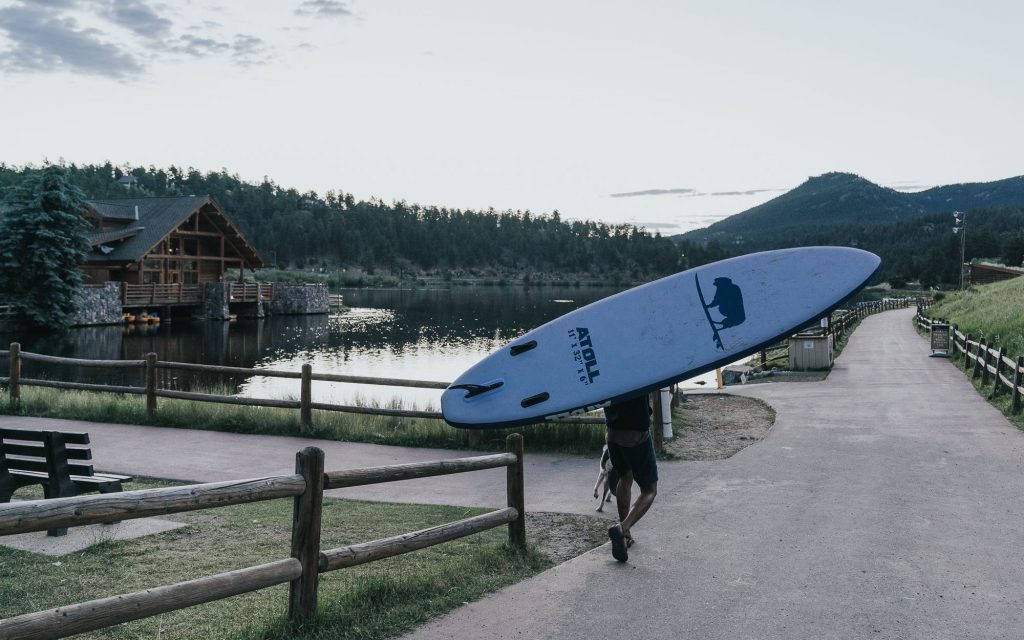
How To Paddle Through Wakes, Waves, Chop, And Swell
When encountering any extra movement on the water, paddling becomes difficult. It doesn’t matter if it’s a wake, wave, chop, or swell.
Your balance is compromised and staying upright is a challenge.
To help you get through the worst of it, you need to practice your balance first.
Quick Balance Tips To Practice
How to Start
Often, the best way to begin paddling is on your knees. This will give you a lower center of gravity and a much easier time balancing. It will also allow you to feel the water underneath the board, how the paddle feels when you’re pushing water, and if there are any ripples in the water, what they do to your balance.
Stay here as long as you need until you begin to feel comfortable on the water.

Start Moving and Remain Moving
Now it’s time to stand up.
Just like when you learned how to ride a bicycle, beginning to stand and balance on a SUP is easier when you are moving.
It seems counterintuitive but when the board is at a standstill there is no momentum in the water and often all you feel is the instability in your feet. On a moving board, you have momentum guiding your actions and it will help you stand upright.
To stand up correctly, place the paddle horizontally across the board in front of you. On all fours with the paddle still in hand, make a tabletop position with your body. From here, bring one foot forward, then the other, and slowly come to a full standing position with your eyes on the horizon – never down at your board.
On a paddle board, you often go where you look. And you don’t want to be looking down! Use this balance tip to stay afloat while paddling your SUP.
Use Your Paddle
Once standing, start paddling.
A paddle is a great tool. It helps you move forward, stop, and increase speed, and it helps you maintain your balance.
With the paddle in hand, use it as a lever to save your balance if you feel unstable. Just by sticking it in the water, you can save yourself from falling in.
Now, paddle, paddle, paddle. With some momentum behind you, your legs will become comfortable standing on the water.
After increasing your balance, the only thing left to know is what to do when encountering choppy water.
What To Do In Choppy Water
After you have the perfect paddle stroke and your balance is trained, you have a great chance of being able to paddle in choppy water no matter where it’s coming from.
However, when you see a wave, wake, or chop in the water, the absolute best thing to do is to point the nose of your board straight and paddle right toward it.
Why?
It’s simple. It is much easier to balance on a paddle board front to back than it is to balance side to side. During a side-to-side rocking motion, your weight shifts to the rails. As one side leans down, the counter-movement propels you in the opposite direction, making it more difficult to stand upright.
When moving straight into the wave, wake, or swell, the forward and backward motion takes the pressure off the rails of your board making it much easier to balance.
So, remember…when you see a disturbance in the water, whether it’s a wake from a boat, a small wave, wake, or even chop, head straight into it!
Of course, there will be times when the water is too chaotic to find the correct way to point the nose of your board. Sometimes, the water’s wakes, swells, or chop are everywhere. During these times, you can drop to your knees to lower your center of gravity to increase your balance.
Or you can pause your paddling, keep your paddle in the water, and use it as a balance lever as explained in the section above. This last point may take some practice. But with more time on the water, everything becomes easier.
Just remember the golden rule…when you see a wave, wake, swell, or chop, head directly toward the disturbance and you’ll have a much easier time staying upright!
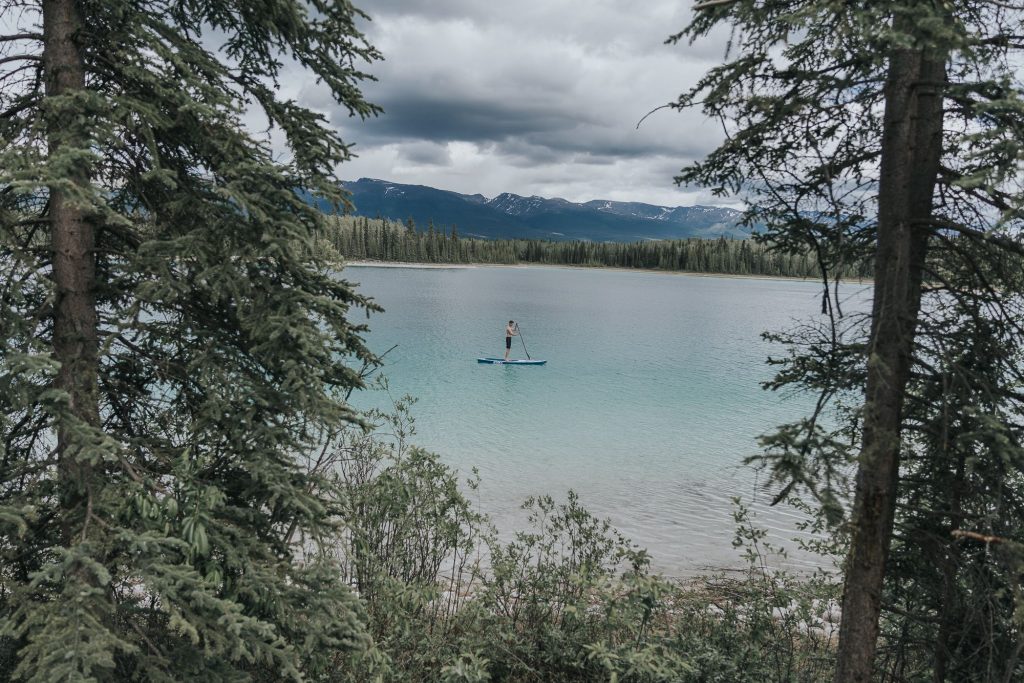
Conclusion
If you really want to be able to paddle in any condition, anywhere, and at any time, it’s important to understand the correct paddle stroke and increase your balance on the water. With those two down, you won’t ever have to worry about waves, wakes, or anything else on the water again. And of course, give yourself the best chance of remaining balance by heading straight into the wake or wave.
We hope this short guide helps you progress as a paddler and ambassador for the sport of SUP. Of course, if you have any questions, or need any clarifications, please feel to reach out to us at any time.


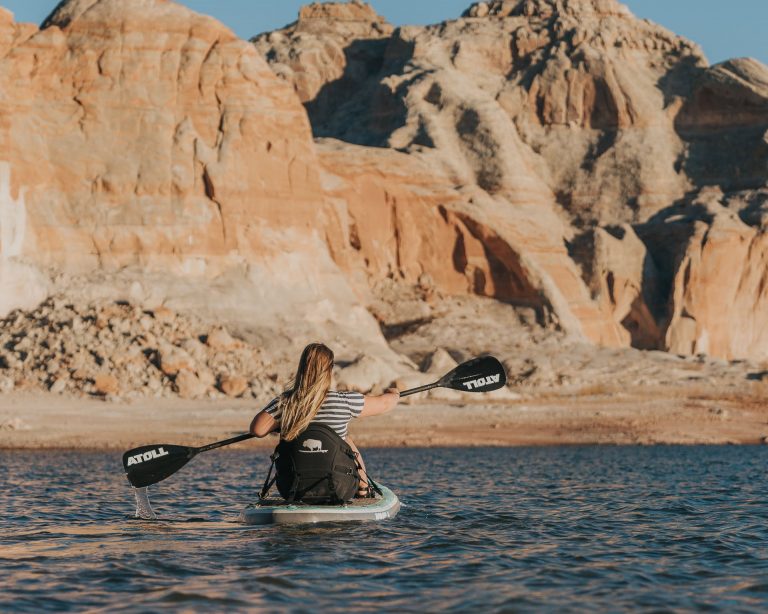

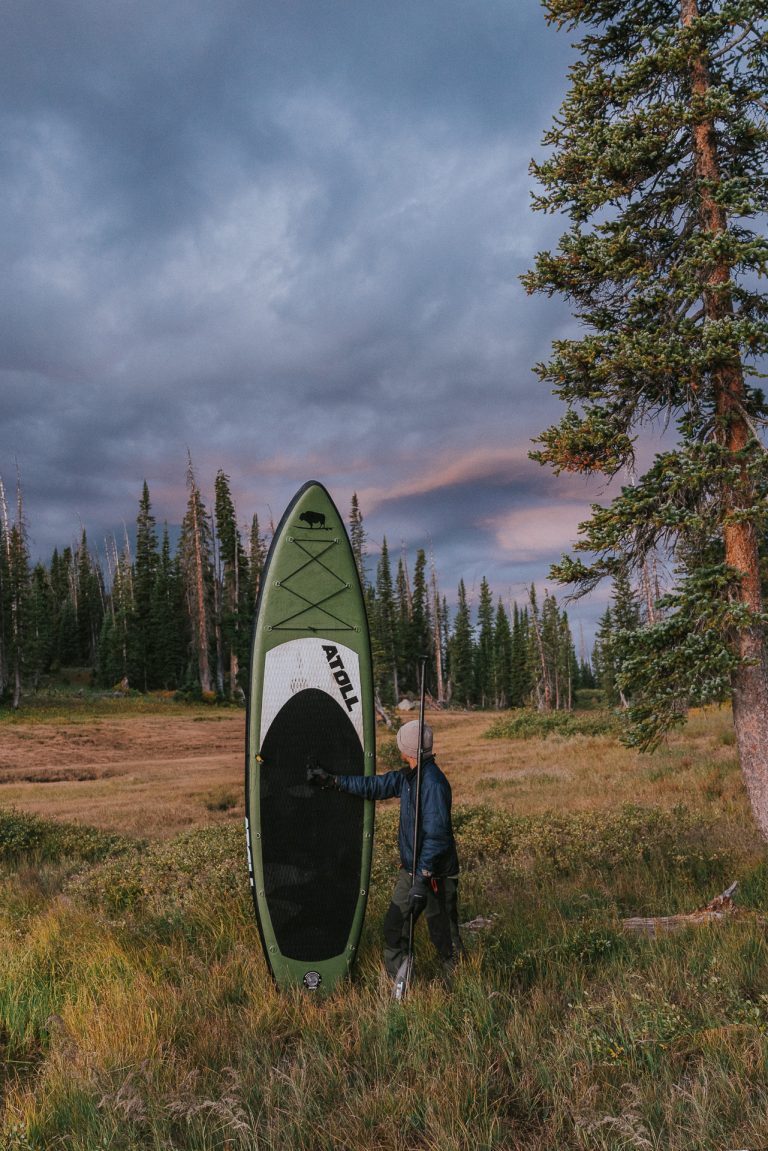

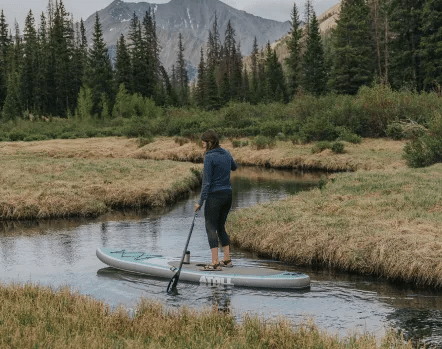

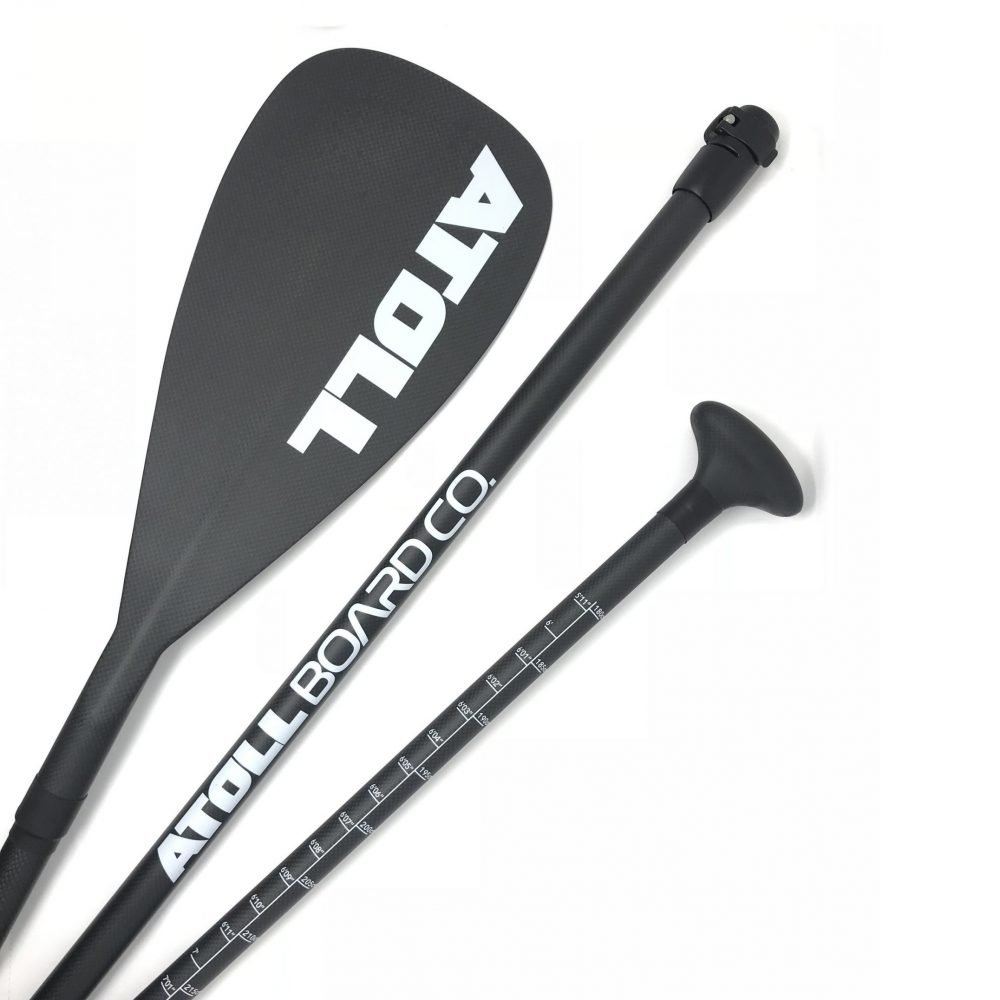
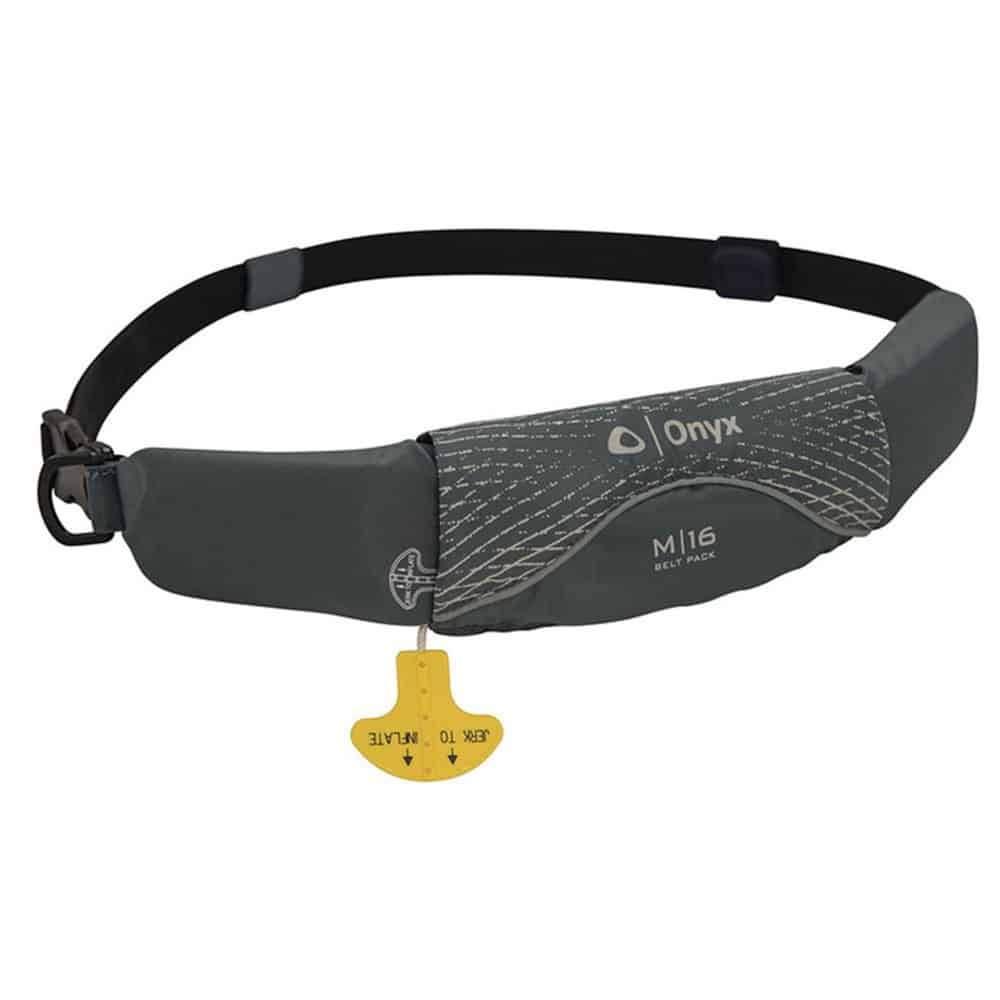
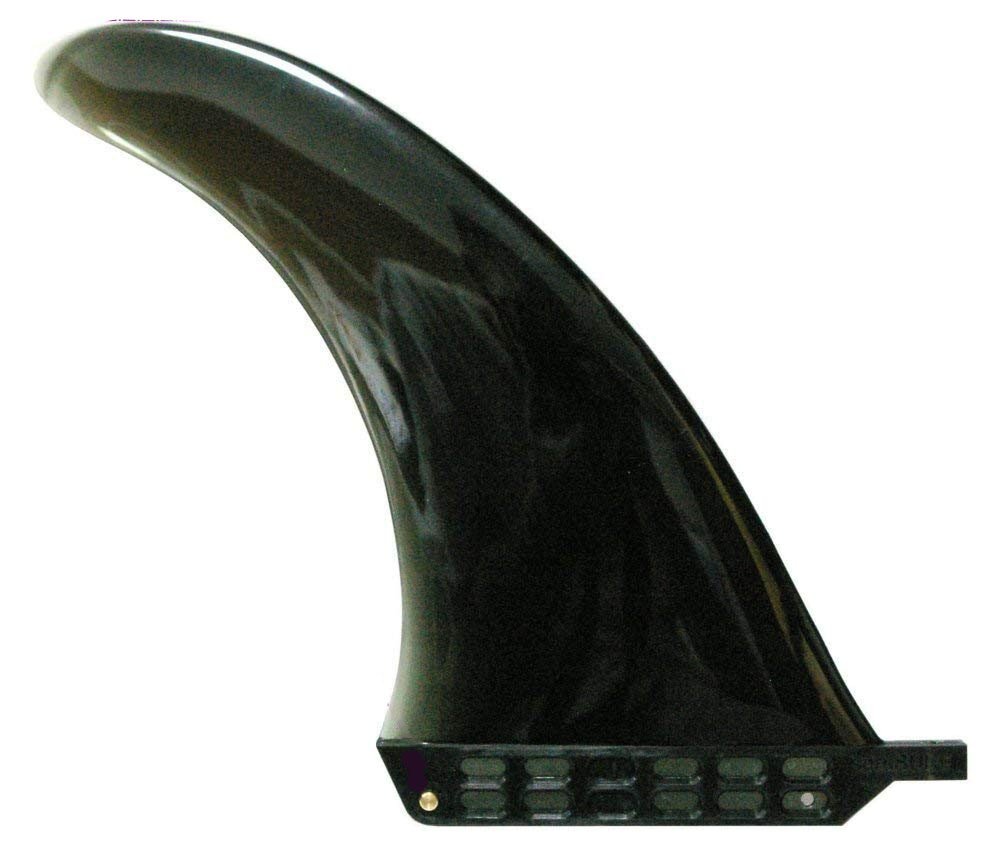
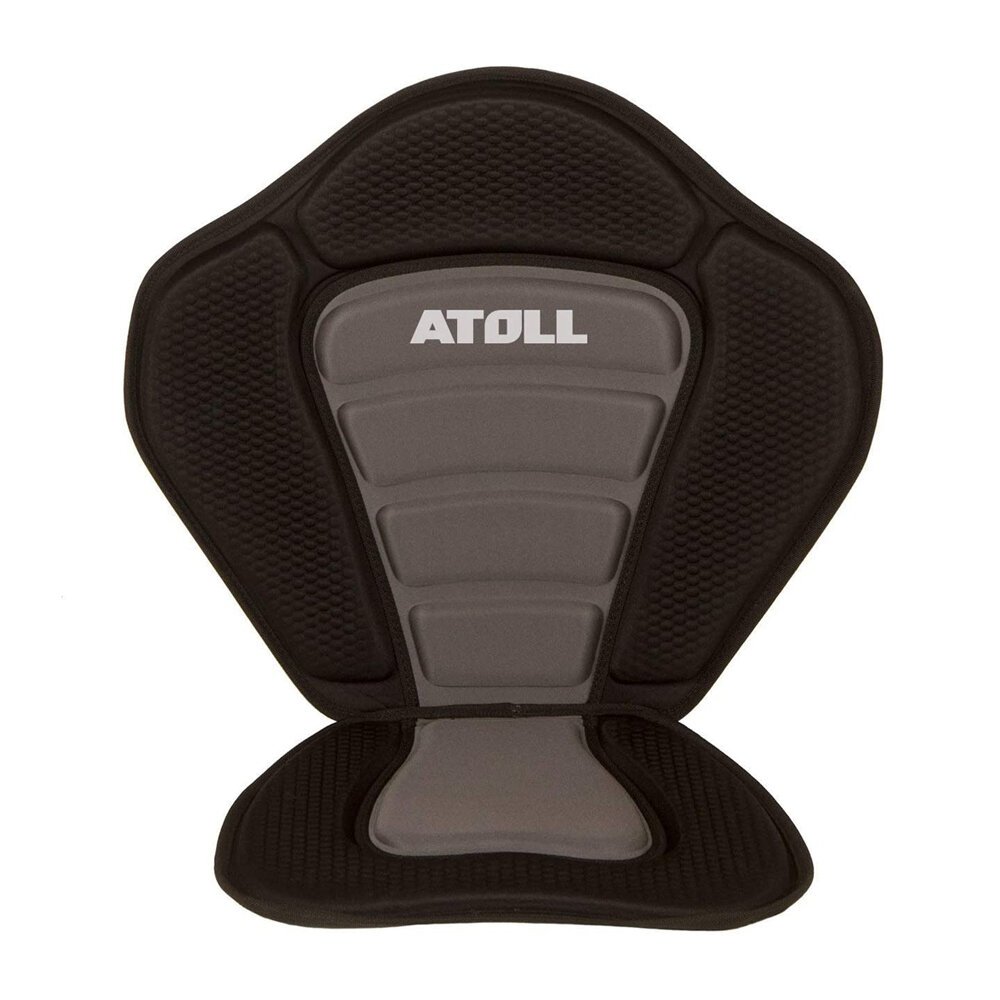
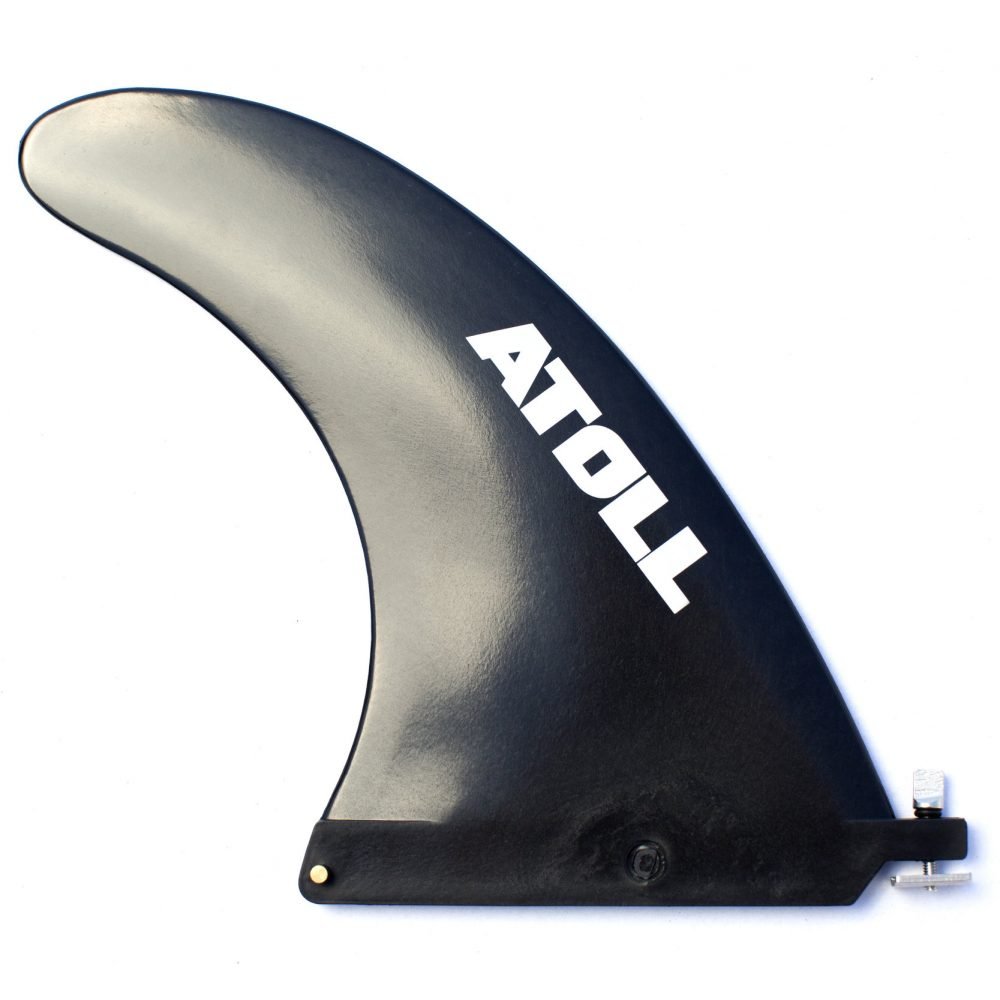
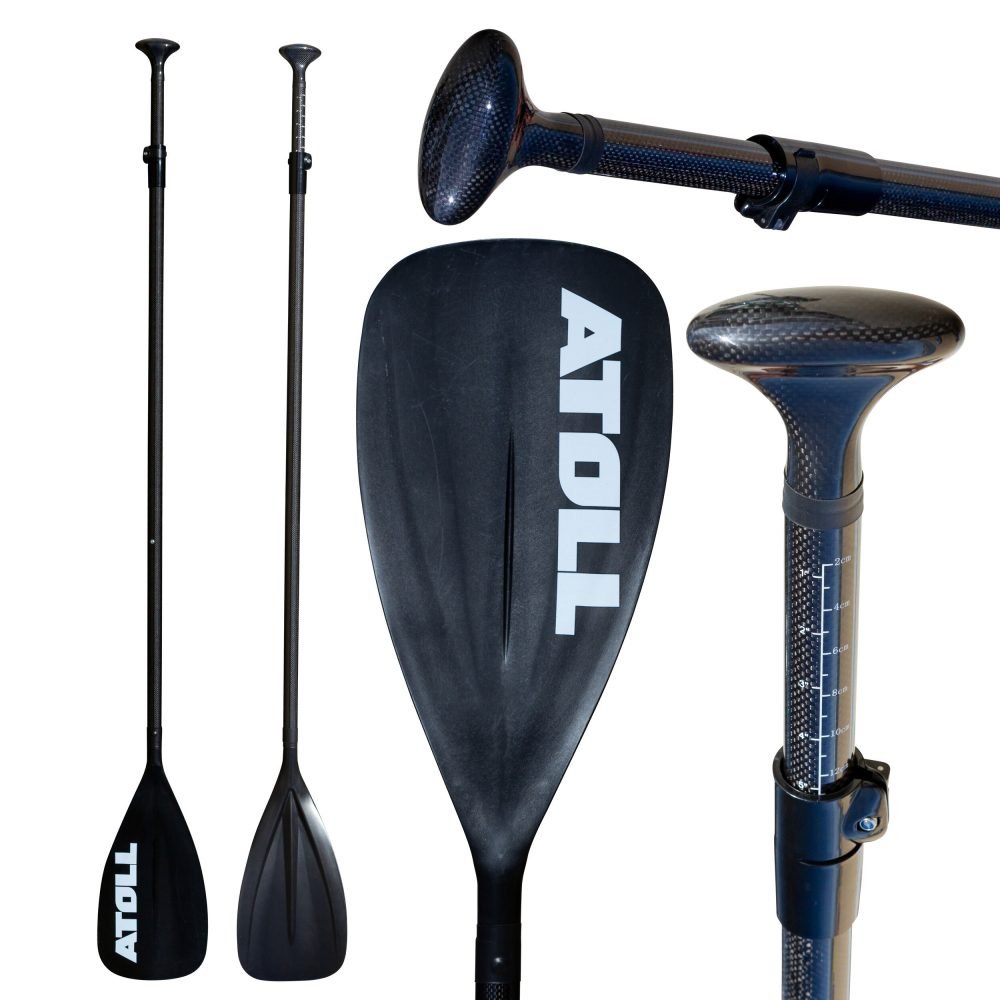
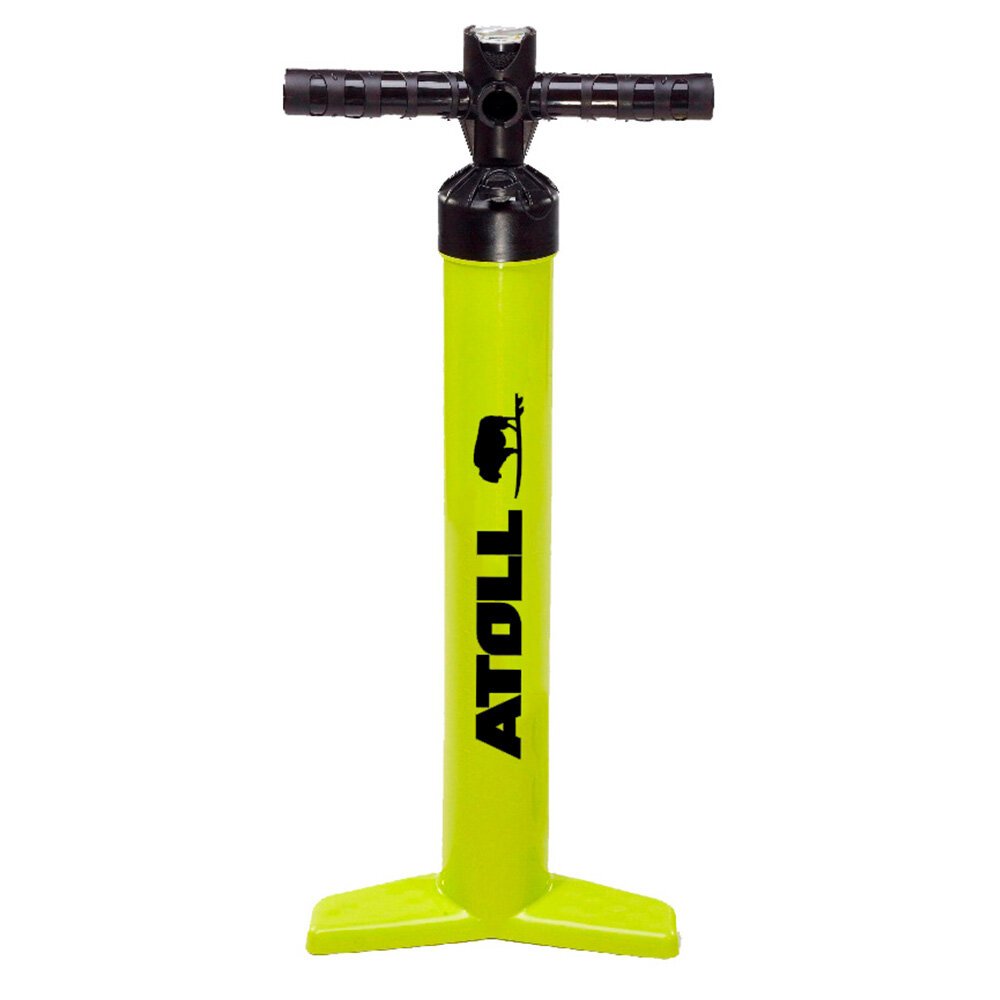
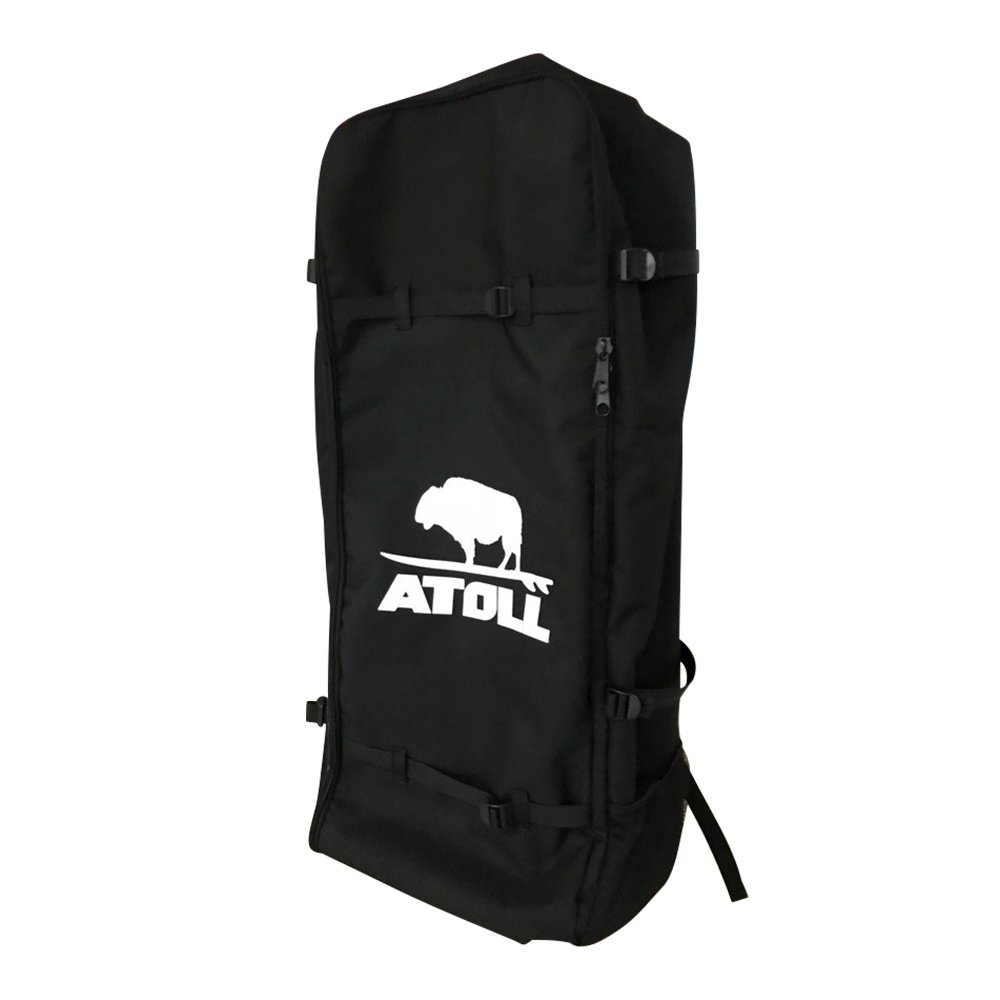

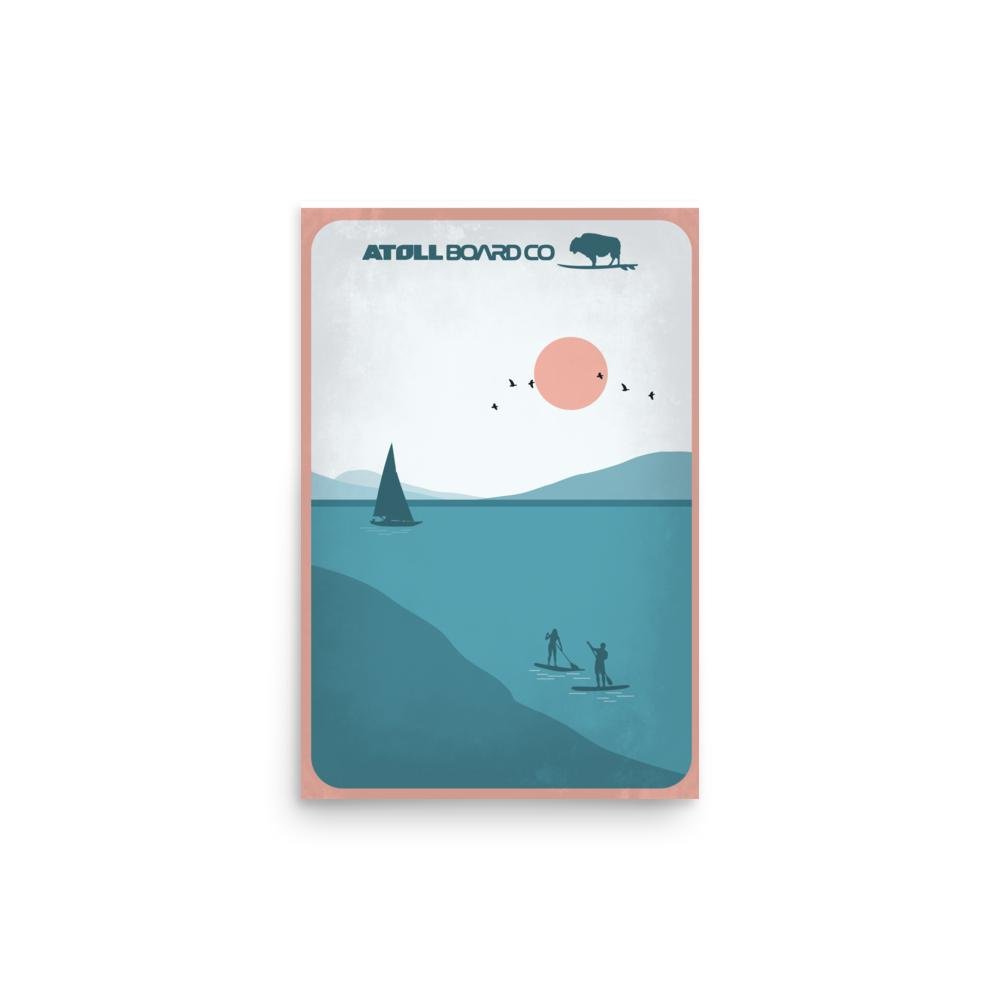
4 Responses
I started kneelboarding on my Atoll on Lake Michigan three years ago, and never got around to standing up. (I like to drop an anchor and chill out, so it’s just easier not getting up and down all the time.) One skill to add: the toss. There are times when you need to keep the nose pointed directly into the wind, which requires a fast hand-swap of the paddle to keep the board straight before the wind favors one side or the other. Practice tossing the paddle quickly from hand-to-hand without hitting the board. Try to make the motion as fluid as possible. A paddle leash isn’t a bad idea, either. I’ve lost 2 paddles in windy, wavy conditions and had to hand-paddle back to shore like a surfer. Not fun. Also, a small anchor is a good safety investment if you’re on a large lake. If the wind is blowing directly away from shore, it really helps to be able to take a break and not lose all the ground you’ve gained with 20 minutes of hard paddling, in only 5 minutes of relentless wind.
Finally, it sounds simple but it’s easy to forget: keep your eyes on the waves. It helps! Especially when you’re paddling at an angle to the current, or with the current, and the waves are coming from behind. No need to be surprised! Watch what’s coming at you, and your body will adjust automatically.
I encourage everyone to get out there on some decent waves. If you spend a good hour or two bobbing around, then go home and lay down in your bed, you’ll feel the rocking effect lingering in your brain, and it’s like being rocked to sleep as a baby.
Great tips! Thanks for reading and sharing!
Needs more surf stance tipz..!1!
Great idea! We’ll get on that. Thanks for reading!